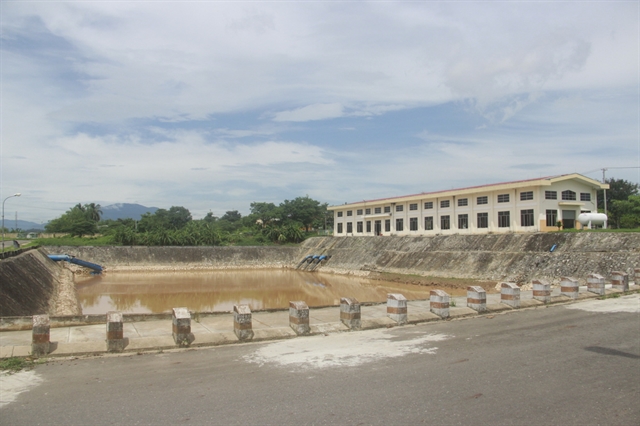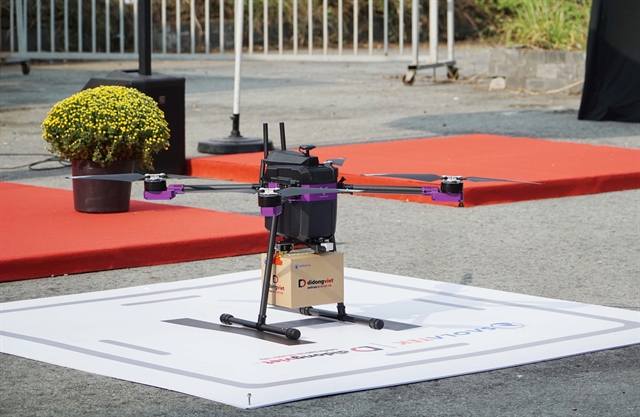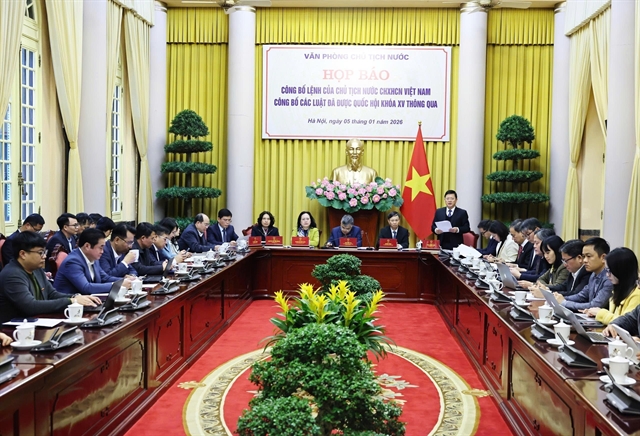 Society
Society

The central city has asked management boards of two hydro-power plants of A Vương and Đắk Mi 4 to discharge at least 8.2 million cubic metres from reservoirs to save the city from a serious water shortage that has lasted several days.

|
| Cầu Đỏ water plant in Đà Nẵng City only operates at 60 per cent of its capacity in supplying water for residents and tourists. The central city has asked management boards of two hydro-power plants of A Vương and Đắk Mi 4 to discharge at least 8.2 million cubic metres from reservoirs. — VNS Photo Lan Anh |
ĐÀ NẮNG — The central city has asked management boards of two hydro-power plants of A Vương and Đắk Mi 4 to discharge at least 8.2 million cubic metres from reservoirs to save the city from a serious water shortage that has lasted several days.
Vice chairman of the city’s people’s committee, Đặng Việt Dũng spoke at a meeting with local departments and relevant agencies yesterday, stressing that dealing with the water shortage is a top priority.
Dũng said urgent actions must be made within 24 hours as the city’s water supply could only meet 70 per cent of demand due to high salinity of the Cầu Đỏ River – the main source of fresh water for 1 million residents and tourists.
The city’s department of natural resources and environment said the salinity in the Cầu Đỏ River rose from 2,000mg per litre to 4,474mg per litre between February and August, and the Cầu Đỏ water plant could not pump water from the river for the city’s fresh water system.
Đặng Nguyễn Thục Anh, an official from the department, said only water discharged from reservoirs of the two hydro-power plants A Vương and Đắk Mi 4 could reduce salinity for Đà Nẵng as water in reservoirs of the Bung River and Tranh River were at an extremely low level.
“We asked the two hydro-power plants – A Vương and Đắk Mi 4 – to moderate their operations in supplying 8.2 million cubic metres for the Cầu Đỏ water plant. This could help reduce salinity in the Cầu Đỏ River to less than 1,000mg per litre – the minimum for fresh water processing for the city’s residents,” Anh said.
“The two reservoirs would still contain 45.25 million cubic metres for power generation and save Đà Nẵng from a terrible lack of fresh water,” she said.
She added the Đắk Mi 4 hydro-power plant should stop generating power as rain would come later in the rainy season this year.
Representatives of the two hydro-power plants agreed to discharge water at a speed of 70 cubic metres per second from A Vương, and 25 cubic metres per second from Đắk Mi 4 within a day.
Hồ Minh Nam, deputy general director of the Đà Nẵng Water Supply company (DAWACO) said water supply had to be cut alternately in districts of Thanh Khê, Sơn Trà and Ngũ Hành Sơn as the Cầu Đỏ water plant only supplies 200,000 cubic metres – 60 per cent of the city’s demand – each day.
Fire trucks and tankers were called to transport water to hospitals and some downtown residential areas, Nam said.
However, the city would experience a lack of water until mid-September due to delayed rain and reservoirs of hydropower plants, including Sông Tranh 2; Đắk Mi 4; Sông Bung 4, 5 and 6; and A Vương, still collecting water from upstream rivers to generate power. It means that water flow into the basin of the Cầu Đỏ River will be restricted.
Meanwhile, the city has yet to start the construction of key water plants – Hòa Trung and Hòa Liên – in adding 250,000 cubic metres of clean water each day in the near future.
The city refused the Japanese funded Hòa Liên water plant, and said it could build the project by 2020.
Water shortages in Đà Nẵng occurred in several years ago, resulting from forest destruction, low rainfall and the operation of hydropower plants in the Vu Gia–Thu Bồn river system covering Quảng Nam and Đà Nẵng.
In March 2019, the ministry of natural resources and environment also asked the upstream hydropower plants to adjust waster released from reservoirs to ease the water shortage in Đà Nẵng. — VNS




